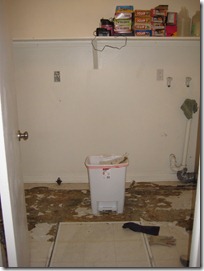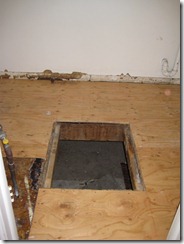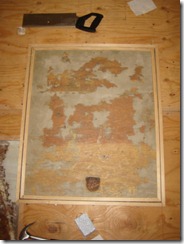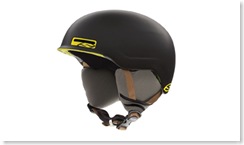Matches
…that I found at an estate sale.
I found the images and fonts inspiring, my vintage treasures.
To hunt for your own collectibles, check out A1 Estate Services for listings in Salt Lake City
…that I found at an estate sale.
I found the images and fonts inspiring, my vintage treasures.
To hunt for your own collectibles, check out A1 Estate Services for listings in Salt Lake City
Let’s face it, bottled water is so 1990s. I know that Dasani and Aquafina have taken steps to reduce the amount of plastic in their products but even if their bottles are made with 50% less plastic, that’s still 50% more plastic consumed than if you had a reusable.
Here are my favorite reusable water bottles:
 Kor ONE hydration vessel – www.korwater.com
Kor ONE hydration vessel – www.korwater.com
Here’s what KOR CEO Eric Barnes had to say about it:
“We wanted to build a brand that is about personal fulfillment, using design to attract consumers because there is already so much out there guilting consumers into drinking out of a reusable…If you look at Voss and Sport Water…the bottle was the experience. It’s amazing how people carry their bottles of Voss and refill it around the water fountain…it’s an experiential thing, a statement saying I’m healthy, I’m drinking water, those bottles are sexy. You look at bottled water and you start to see bottled design and that’s something we knew we could capture in a reusable.
If you’re about health and you’re about hydration, how can you have your little buddy with you and have it become something you hang on to? This is the next accessory…a statement of who you are and what you are about.”
I’ve had mine for years and I love it! I get so many compliments on it, it’s easy to drink out of (I never splash myself like I did with my Nalgene), and I could never lose it. They are available nationally at Amazon.com and locally at Golden Braid Books, Paisley Pomegranate and Cole Sport.
Here I am, enjoying the personal hydration experience near West Yellowstone, photo by Alexa Miller.
Alex bottle – http://www.alexbottle.com/
The Alex bottle is a new brand started by a small group of designers who wanted creativity, functional integrity and simplicity in a reusable water bottle. It is named “Alex” because it’s like your new best friend. I love the color options and the fact that they can be taken apart to clean. Another great feature for backcountry users is that they pack down to half their size. I ordered the black and green, which one is your favorite?
You can order them on Alex’s website: http://www.alexbottle.com/shop.php
Camelbak Better Bottle, Stainless Steel-http://www.camelbak.com/sports-recreation/bottles.aspx

Camelbak has become a leader in the outdoor recreation industry by redefining personal hydration with their lightweight, high capacity water reservoirs. Their stainless steel bottles are a little more fashion forward for toting around town.
Drinking out of a Camelbak is just plain fun – it brings me back to my childhood days of sippy cups. I find that when I drink out of the bite valve, I drink more than when I have to pour it back.
These ones are made from medical grade stainless steel and are naturally BPA free. They come in a variety of designs to suit your taste (or just plain classic if that’s your style).
They are available at your local REI store or at backcountry.com.
I’d love to hear any feedback with your thoughts on reusables. What is your favorite? How do you stay hydrated?
Not all of my adventures are outdoors. A few weeks ago, I decided to undertake a new challenge – redoing an old linoleum floor in my laundry/pantry room. Now let me make one thing clear – the only tool I own is a power drill that I use to make shell necklaces. I am crafty but home renovation was previously out of my realm. This was a big undertaking so I decided to start by doing some research.
Since my washer and dryer were going in there, I wanted to do something waterproof or at least water resistant. The other challenge with this room is a trap door to get into my crawlspace in the middle of the room. Since the door is already quite heavy, I didn’t want to use tile because I felt like it might make the door too much of a beast for me to pick up on my own and I need to have access to the crawl space in case I ever need to check on my furnace, plumbing, etc. Finally, I wanted to do something eco-friendly and affordable.
The first thing I did was to head to The Green Building Center here in Salt Lake City, UT. Their staff was knowledgeable and friendly and they have so many cool products to look at – I especially love the recycled glass countertops and their zero VOC paint selection. It is crazy how toxic many building materials are.
Back to the floors-the first thing I looked at was a product called Marmoleum. It is basically the original linoleum (before linoleum was made from petrochemicals) and is made from linseed oil and a variety of other eco-friendly products. Unlike vinyl, it is designed to last for a long time. The main reason I didn’t go with the Marmoleum is that I had to order it – I wanted something I could look at and pick up in store.
After looking at that, I met with a few flooring specialists, got some bids, wracked everyone’s brains for ideas, and thought about it for a few weeks. I checked out Habitat for Humanity’s Restore, a home building thrift shop in Salt Lake and Recycle Utah in Park City to see if either had any cool left over pieces of flooring I could use. By the way, if you ever are doing a remodel and have any leftover or demo materials, bring them to these places instead of throwing them away. You would be amazed at what people can do with your old kitchen cabinets!
I was at my wit’s end trying to decide what to do so I called the folks at the Green Building Center again. Ashley, the owner, suggested one product I had never heard of – Deco – Poz, an eco-friendly concrete overlay product. You can lay it down over almost anything, it is waterproof, looks cool and is easy and affordable. I was sold! I went in a bought all my materials that afternoon for the weekend ahead.
Then the real fun began… DAY 1
 Peeling linoleum is not nearly as fun as I thought it would be… When I started, there was a big seam and I thought I could just get underneath that and get it all off in a little bit but obviously, that was not the case.
Peeling linoleum is not nearly as fun as I thought it would be… When I started, there was a big seam and I thought I could just get underneath that and get it all off in a little bit but obviously, that was not the case.
Here’s the floor after the first few hours of the project…
I called one of my friends, professional painter and ski photographer, Brent Benson and he came over to help me the next day.
Day 2: Turns out the best thing to do was to remove the whole subfloor…
Thanks Benson for all your help. At this point in the project, I was hoping I would’ve been applying the Deco-Poz, but I was glad to do this the right way.
Forrest and I prepping for the install of the new subfloor.
Day 3: new plywood subfloor
Sealing the new subfloor with Deco-Poz polymer.
Day 4: Edging/framing the trap door.

 I had to reframe around the trap door – initially we wanted to use metal but it was tough to work with! So we ended up buying a mitre box and did that.
I had to reframe around the trap door – initially we wanted to use metal but it was tough to work with! So we ended up buying a mitre box and did that.
Day 5: the real fun began! Mixing up the first batch of Deco-Poz. I had done a mini-practice batch before and laid it on a piece of plywood. The Green Building Center had recommended I did that, and it made me much more comfortable working with the product before taking it to my actual floor.
Mixing the Deco-Poz, water and Polymer. You want to achieve a pancake consistency, although I tended to favor more of a crepe like texture so that I had a little longer before it dried.
As an artist, I really enjoyed working with this product. It was a little stressful because it dries so fast, especially on a hot day in dry Utah. I used a Magic Trowel to get it flat and smooth.
Yeah! It didn’t take very long and I had a new floor!
Day 6: I sanded the concrete. Since I had the room wrapped in plastic, there are no pictures. I wore my respirator, goggles and gloves. I tried to do a wet sand but it didn’t work very well with my power tools so I dry sanded. There was a lot of dust – I did my best to shop vac up all the dust. But I just did a light sand and it came out very smooth.
Day 7: Staining. I decided to stain it light brown (I mixed charcoal grey with white).
As I started laying down the brown, I decided I didn’t like it and quickly switched to concrete grey. The stain came out a lot darker than I thought it would. Staining was hard – you really have to push it in. It’s not like painting at all.
Day 8: Sealing
It was like 100 degrees that weekend and I had all the windows open in the room to get ventilation so I was working in my swimsuit – flooring is a good back workout! I definitely burned a lot of calories and strengthened my lats. I used Vermont Natural Coatings low VOC polyurethane and did 3 coats to get a semi-gloss finish.
After that, I added the baseboards, painted the walls and voila! New laundry room! It took a lot longer than I expected and was a lot of work but now I have the satisfaction of a job well done.
I would definitely recommend Deco-Poz concrete overlay for anyone looking to redo a kitchen, bathroom or laundry room floor. It is modern, affordable, and eco-friendly!
Also, be sure to check out the Green Building Center here in Salt Lake City – they have some great products to help with your next project.
Check out this amazing locally made jewelry by Beaucoup de Bijoux. The business is run by two sisters, Stephanie and Rose. Rose is a Graduate Jeweler of the Gemological Institute of American and uses inspiration from nature to craft each unique piece.
I recently received the cuff and pendant as a gift and I love them! They are the perfect gift for the ripper girl in your life or anyone who appreciates the beauty of the mountains.
Click on the photos to go to their Etsy page and be sure to check out the rest of their line.
You can follow them on Facebook page: www.facebook.com/BeaucoupDeBijoux
Or on Twitter: www.twitter.com/beaucoupdebijou
This season, while we are debating what to get for our friends and family, we need to consider the impacts our buying decisions have on people throughout the world. In our country’s current state, one of the only true ways we can voice our preferences is through our buying decisions–essentially, voting with our checkbooks. We need to look at the big picture.
As you are shopping, ask yourself, where this product came from? How was it made? Think about how oil intensive most products are and ask yourself, do we really need this?
Who made it? What toxic chemicals was this person exposed to during the manufacturing process? How many hands have touched this to bring it to me, here in America, and does the price really reflect this? Often, price and value are inconsistent.
Consider buying used. Thrift Town is one of my favorite thrift stores. It’s clean, bright and organized. In the front of the Salt Lake store, you can find antique and vintage jewelry. There are also great t-shirts, toys and other home furnishings. Craigslist is also great shopping resource. Look at an item to see if a little soap and elbow grease could clean it up and make it beautiful and usable again.
If you need to buy something new, try to find things that are made out of sustainable or recyclable materials.
Here are some ski and outdoor related ideas:
Leki Project 19 Poles–
The shafts are made from aluminum and the grips are made from reclaimed plastic and rubber. They are 98% recyclable. They are made in an advanced production factory where recycling and reusing occurs whenever possible.
Smith optics is now making a line of helmets, goggles and sunglasses out of recycled and renewable based materials. The goggles are made from 98% re-ground urethane, reducing their dependency on virgin urethane.
The helmets have a lining made  from Evolve X-Static fabric that is fully recyclable at the end of their lifecycle. X-Static won the Oeko-Tex Standard 1000 accreditation, which certifies the absence of toxic substances in the manufacturing process.
from Evolve X-Static fabric that is fully recyclable at the end of their lifecycle. X-Static won the Oeko-Tex Standard 1000 accreditation, which certifies the absence of toxic substances in the manufacturing process.
Patagonia Women’s Pipe Down Jacket:
The lining is made from recycled used soda bottles, usable second quality fabrics and worn out garments. This jacket is made to last and has a timeless sophistication that is sure to keep you warm (and whoever you hand it down to) for years to come.
To find out more about Patagonia’s manufacturing, check out this recent article I wrote for Skiing’s website:
When wrapping your gifts, use recycled newspaper, fabric scraps or anything you have handy. Also consider buying local gifts. There are many great holiday arts and craft fairs where you can buy hand made products that support a vibrant local economy. You can talk to the people who made the stuff to find out exactly what it was made with.
Finally, think about the end of life disposable of the product. Can it be recycled? Will it last?
If there’s someone on your list that you need to buy a gift for but can’t figure out what, buy them a pack of CFL light bulbs to save money on their electric bill, or a bar of soap. Small changes, like replacing your light bulbs or using bar soap instead of liquid packaged in plastic, can go a long way to preserving the planet.
Merry Christmas everyone!